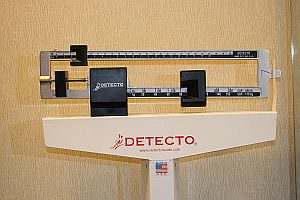Beating the Odds: How Some People Stick with Diet and Exercise Plans

How long did your last diet or exercise plan last? If you’re like many people, your answer is “not that long.” In fact, one UK survey found that the average length of time a person stays on a nutrition plan is 19 days. A slightly more positive poll found that women tended to quit their diets after five weeks and two days. If these statistics sound distressingly familiar, it might be time to reassess how you approach your own diet plan.
How Do People Stick with Their Diet and Exercise Plans?
If you want to make sure your diet and exercise plan doesn’t become just another statistic, a change in attitude can make all the difference. In order to create a diet plan you can stick with, it’s important to be honest with yourself about what types of changes will fit into your lifestyle. Diet plans with long lists of “bad” foods might help you cut back on calories in the short term, but do you really plan to go the rest of your life without cake? People who stick with their diet plans take a more moderate approach, making small changes that they can live with in the long term.
Exercise plans can be just as difficult to carry out. People who stick with their exercise plans view physical activity as a regular part of life, not something they do only when they have the time, energy, and motivation. Of course, sticking with physical activity is much easier when it’s enjoyable. Rather than slogging it out on the treadmill, try yoga, martial arts, or another exercise program that stimulates your mind as well as your body. And variety helps too!
You Don’t Have to Go It Alone
Whether you’re building a diet plan or an exercise program (or are making changes in both areas), the people around you can make a huge difference in your level of success. If your spouse, children, or friends tend to turn to food in celebration or out of boredom, it’s easy to forget about your diet goals. Getting enough exercise is a lot more difficult if the people around you would rather watch TV than go on a walk.
Fortunately, when it comes to sticking with your diet and exercise plan, the people around you can also be a huge help. Making dietary changes as a family can help everyone involved lose weight and improve their health, while exercising with a friend can make the time go by much more quickly and pleasantly.
Having the support of a chiropractor who really understands the power (and challenges) of making healthy lifestyle changes (think nutrition, exercise, sleep and stress management, for example) is another way to help you meet your goals. The staff here in Billings at Oblander Chiropractic can work with you to make targeted, realistic adjustments that you’ll be able to stick with in the long term. Sticking with a diet and exercise program isn’t always easy, but you might be surprised by just how easy it is to make the changes you’re looking for with the right type of advice and support!








 Everyone deals with stress in their lives. And—in small doses—this can be a very good thing. Manageable amounts of stress can actually help you perform at your best and may even help you develop your abilities. However, far too many of us are stressed to the point that our health and well-being could be compromised.
Everyone deals with stress in their lives. And—in small doses—this can be a very good thing. Manageable amounts of stress can actually help you perform at your best and may even help you develop your abilities. However, far too many of us are stressed to the point that our health and well-being could be compromised.